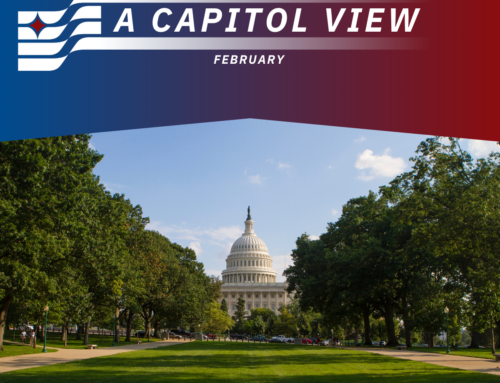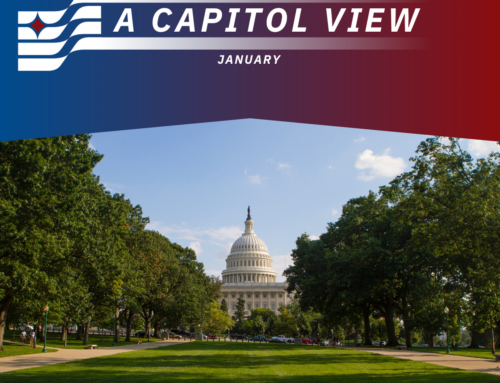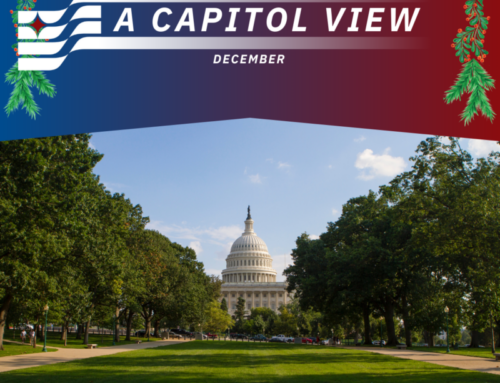Hello from Washington DC! We hope you and your loved ones are doing well as we emerge from the dark days of the COVID pandemic. Since our last update, we have continued our efforts to encourage Congress and the Biden Administration to increase federal support for development and deployment of advanced water power technologies and systems. Please find below a brief summary covering our progress.
While the water power sector continues to face multiple challenges and economic disruption related to COVID and now the terrible Russian invasion of Ukraine, we see hopeful signs of progress that technology developers are pushing through towards commercialization. The U.S. Department of Energy (DOE) Water Power Technologies Office (WPTO) is actively planning for new funding opportunities and continues to invest in projects that will support the Administration’s decarbonization goals. For the latest information and additional details, please see the WPTO’s recently released Multi-Year Program Plan.
On the marine energy front, congratulations to CalWave for their open ocean deployment last year in California. We are optimistic that C-Power and Oscilla Power will soon deploy their devices at the U.S. Navy’s Wave Energy Test Site (WETS) at Marine Corps Base Hawaii. Oregon State University and its partners continue development of the PacWave project, a 20-megawatt grid connected wave energy test facility near Newport, Oregon. And other projects are on the way, including Powering the Blue Economy infrastructure development at PNNL’s Marine Sciences Lab in Sequim, WA. In addition, there are multiple wave and tidal energy device deployments at the European Marine Energy Centre and other locations around the world.
As previously reported, NHA’s “Commercialization Strategy for Marine Energy” was released last April. SMI’s Paul Gay led the effort to create the strategy and promote it with key government officials. The strategy established marine energy deployment targets of 50 MW by 2025, 500 MW by 2030, and at least 1 GW by 2035. The Marine Energy Council held a successful industry-led strategy session at NHA’s Clean Currents conference last October on building a roadmap for the “50 by 25” goal. As you reach out to potential investors, media, and elected officials who set energy policy, please consider sharing the strategy so we can maximize industry influence while decisions are being made to support new clean energy technologies.
We look forward to talking with you soon and hope to see you at Water Power Week in Washington (April 5-7). Other conferences later this year include POET’s Ocean Renewable Energy Conference (September), the International Conference on Ocean Energy in San Sebastian, Spain (October 18-20), and/or NHA’s Clean Currents 2022 in Sacramento, CA (October 18-20). Thanks for your ongoing interest and support for water power!
The SMI Water Power Team
New Federal Funding Coming Soon – Infrastructure Investment and Jobs Act
Congress passed bipartisan infrastructure legislation on November 15th, 2021. The bill has significant resources for water power. The measure includes an additional $70.4 million for marine energy R&D and $40 million to support the national marine energy centers. It also includes $36 million for hydropower efforts. This funding is in addition to the annual appropriated WPTO funds. In addition, the Infrastructure Act includes $21.5 billion to establish a new Office of Clean Energy Demonstrations. The majority of the funding will go towards clean hydrogen, carbon capture, and energy storage projects. However, there is $1 billion for rural and remote community energy which should offer opportunities to pursue water power projects. We are encouraged by the recent staff appointments to the OECD and will be promoting project concepts to them throughout the year.
DOE WPTO FY22 Funding – Congressional Action
Despite the delayed start to the budget and appropriations process for this fiscal year, Congress has now completed its FY22 funding for the U.S. Department of Energy and Department of Defense. Below is the final FY22 Water Power report language. Please contact us if you are interested in learning how certain provisions and funding levels were included in this text.
“Water Power Technologies – The agreement provides not less than $47,000,000 for Hydropower Technologies and not less than $112,000,000 for Marine and Hydrokinetic Technologies.
The agreement provides $5,000,000 to continue industry-led research, development, demonstration, and deployment efforts of innovative technologies for fish passage and invasive fish species removal at hydropower facilities, as well as analysis of hydrologic climate science and water basin data to understand the impact of climate change on hydropower. The agreement provides up to $10,000,000 for the purposes of sections 242 and 243 of the Energy Policy Act of 2005.
The agreement provides not less than $24,000,000 for the Powering the Blue Economy initiative. The agreement provides up to $20,000,000 to address infrastructure needs at marine energy technology testing sites, including general plant projects, and to support for planning activities for the staged development of an ocean current test facility. The agreement provides up to $5,000,000 for the Department to continue its support of operations at the Atlantic Marine Energy Center to accelerate the transition of wave and tidal energy technologies to market.
The agreement reiterates House and Senate direction on industry-led competitive solicitations to increase energy capture; foundational research activities led by universities and other research institutions affiliated with the National Marine Energy Centers; the continued development and construction of an open water, fully energetic, grid connected wave energy test facility; and the continuation of the Testing Expertise and Access for Marine Energy Research initiative. The Department is directed to continue to coordinate with the U.S. Navy and other federal agencies on marine energy technology development for national security and other applications. The agreement provides $5,000,000 for the environmental analyses and engineering of potential run-of-river hydrokinetic facilities at two sites with high electricity costs and diesel use as determined by the Secretary.”
DOD/U.S. Navy Funding – Congressional Action
Our advocacy efforts in support of additional funding for U.S. Navy investments in water power paid off. Congress included $10.5 million to support the Naval Facilities Engineering Command activities at the Kaneohe Bay, HI MCB Wave Energy Test Site and select national marine energy centers along with other activities. We are preparing a briefing for senior Navy leadership to determine a future path for providing shore power solutions, as well as power for remote applications to include AUV recharging and forward deployed surveillance systems. Additionally, the Army Corps of Engineers received $8 million for small modular hydropower systems R&D. As the DOD reviews its decarbonization and energy resilience strategies, we are hopeful that marine energy and hydropower will play an increasing role.
DOE Section 242 – Hydroelectric Production Incentive Program
For the first time since the program was established by Congress in 2005, changes were made to the program to increase the categories of eligible projects. With the passage of the Energy Act of 2020, new greenfield hydropower projects that are 20 MW or less, that have received a construction authorization from FERC, and are constructed in an area of inadequate electric service can apply for the incentive. FERC, in its most recent program guidance document, included marine energy systems under this new category of eligible projects. The Section 242 incentive provides a 1.8 cents per kilowatt hour payment (adjusted for inflation) that can be taken for 10 years. Payments to a qualified facility are capped at $1 million a year. The cap on annual payments was increased from $750,000 to $1 million per project as part of the recent infrastructure bill. For more details, please see the recent Section 242 guidance from DOE.
FY 2021 applications closed February 10, 2022. DOE intends to open FY 2022 application period after FY 2021 applications have been reviewed, evaluated, eligibility determined, and payments are made. The notice for applications is expected in the Summer/Fall 2022.
DOE Section 243 Hydroelectric Efficiency Incentive and Section 247 Hydroelectric Grid Resiliency, Dam Safety, and Environmental Improvements Incentive
The infrastructure bill provided funding for the Section 243 incentive for the first time in the program’s history, which was also first enacted in 2005. The program provides a payment to hydropower owners/operators at existing dams for capital improvements directly related to improving the efficiency of facilities by at least 3 percent. The incentive payment shall not exceed 30 percent of the cost of the capital improvement and is capped at $5 million to a single facility in any one fiscal year.
The Section 247 program was also created and funded under the infrastructure bill and is designed to provide assistance to the owners of existing facilities with certain capital investments that are not otherwise supported by the tax code or other policies. This new incentive payment shall not exceed 30 percent of the cost of the capital improvement and is capped at $5 million with no more than 1 payment made at a single qualified hydroelectric facility in any one fiscal year.
DOE has released a schedule for the administrative processes for getting these programs up and running. Requests for Information (RFIs) are expected in April with public workshops to be held in May. Guidance documents are scheduled for release in the fall with Notices of Proposed Rulemakings (NOPRs) to follow. Notices seeking applications are not expected to be issued until 2023.
Upcoming Deadlines/DOE Webinars
– Abstracts for the International Conference on Ocean Energy (ICOE) 2022 – March 25, 2022.
– Apply for the DOE Energy Transitions Initiative Partnership Project (ETIPP) – April 15, 2022.
– Congressional appropriations requests to Congress – March 01 – April 15.
Recent DOE Webinars
– WPTO Semiannual Stakeholder Webinar was held on March 10, 2022.
– R&D Deep Dive Webinar on Marine Energy Testing Needs to Inform Infrastructure Investments was held February 9, 2022.
– R&D Deep Dove Webinar on The Environmental Decision Support Toolkit and Relicensing was held January 26, 2022.
To view the R&D Deep Dive events, please click here.
About – SMI Value Proposition
Our team at SMI has a proven and successful track record in supporting our clients as they navigate the processes and challenges in partnering with the U.S. Federal Government to develop and deploy new water power technologies. Please contact us if your company or organization could benefit from SMI’s federal marketing and lobbying services. We also encourage our readers to join the National Hydropower Association and the Marine Energy Council which play important roles supporting critical industry advocacy efforts here in Washington. If you are not yet a member of the NHA Marine Energy Council, please join! Growing MEC membership strengthens our ability to secure support from elected officials for increased federal investments in water power.
SMI, Inc. is a full-service government relations firm that provides clients with consulting services focused on strategic marketing and capturing federal funding. SMI is dedicated to helping clients develop and demonstrate clean energy technologies through government program and industry marketing support. Our experienced team works with the Federal Government to secure funding and shape policy as well as promoting legislation that encourages clean energy development and deployment. SMI has secured approval of over $750 million to date in federal funding to support marine energy R&D and demonstration projects
We periodically send emails highlighting developments, updates, and other newsworthy mentions concerning the marine energy industry. We do this because you are a valued client, or you have expressed an interest in keeping abreast of developments in the rapidly growing marine energy industry. However, if you do not like to receive such updates, please feel free to unsubscribe at the bottom of this message and you will be removed from the list.




